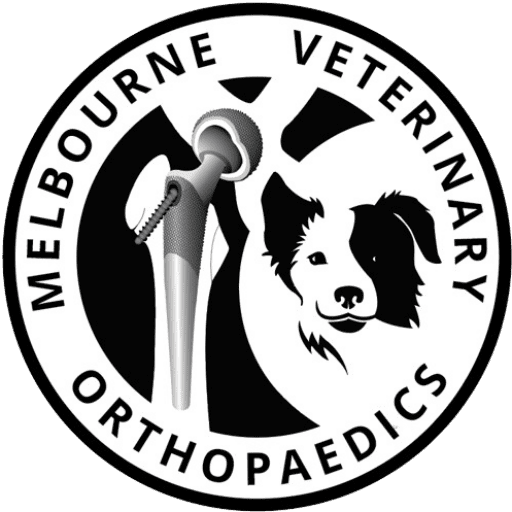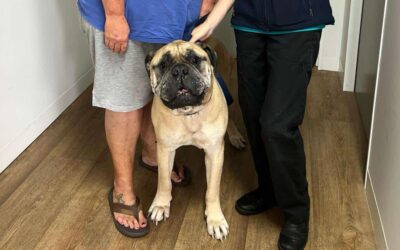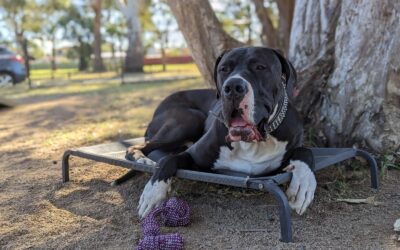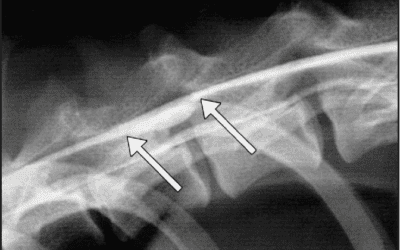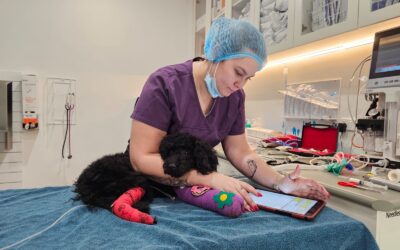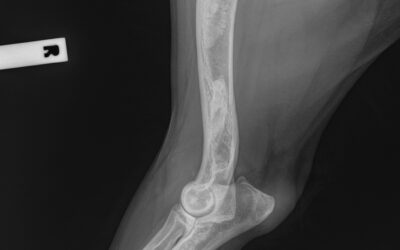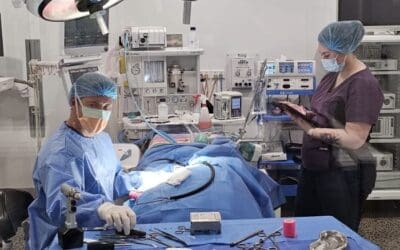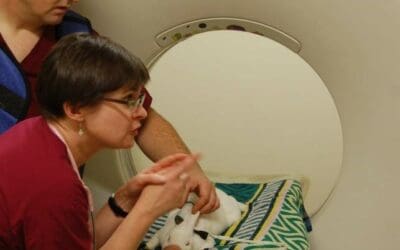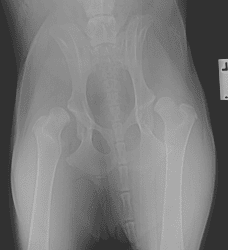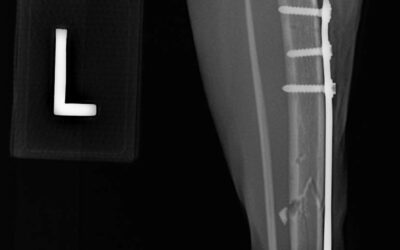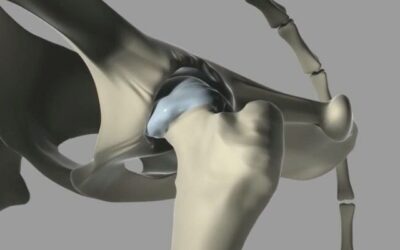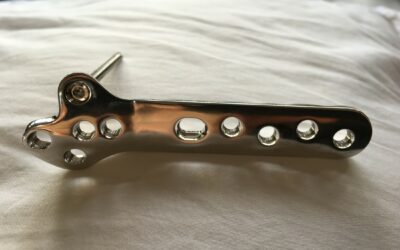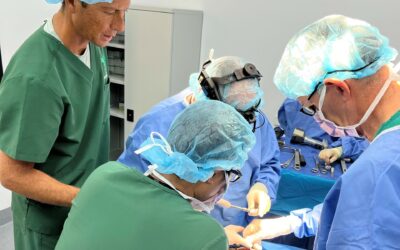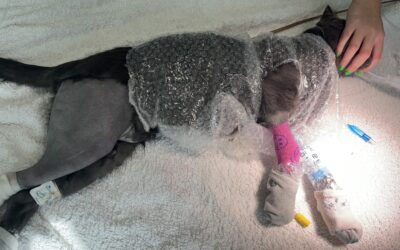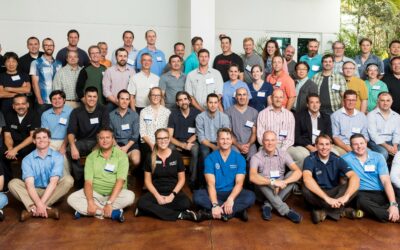Reducing infection during veterinary surgery is crucial to ensure the safety and recovery of the animal. Infection control involves several key practices, from preoperative to postoperative care. Here's an overview of essential measures to minimize infection...
Blog
Bone cancer in dogs amputation
This x-ray shows an advanced bone cancer, structurally weakening the bone, which resulted in a pathological fracture. Amputation can be a treatment option for dogs with bone cancer, especially if the cancer is localized and hasn't spread to other parts of the body....
What’s different with surgery on big dogs? Bloat
Surgery on big dogs, particularly for conditions like bloat (gastric dilatation-volvulus or GDV), can be more complex than in smaller breeds due to several factors: Size and Anatomy: Larger dogs have more body mass and different anatomical structures, which can make...
Transarticular external skeletal fixation
Transarticular external skeletal fixation (TAESF) is a specialized surgical technique used in veterinary orthopaedics to stabilize joint injuries, fractures, or post-operative conditions. It involves the application of an external fixator that crosses a joint,...
Subarachnoid spine cyst surgery
Subarachnoid spine cysts, often referred to as arachnoid cysts, are fluid-filled sacs that can develop in the spinal canal or the subarachnoid space surrounding the spinal cord. In some cases, these cysts may not cause any symptoms, but if they grow large enough or...
Smartflow application in veterinary practice
SmartFlow is a vet software program used to record treatments and record anaesthesia SmartFlow is a cloud-based veterinary practice management software that streamlines various aspects of veterinary care, including patient management, medical records, and workflow...
Panosteitis German Shepherd dog
Panosteitis, often referred to as "growing pains," is a condition commonly seen in young, rapidly growing large breed dogs, including German Shepherds. It involves inflammation of the long bones in the limbs and is characterized by pain and lameness. Here’s an...
How do you sterilize instruments?
Sterilizing instruments is crucial in veterinary medicine (and other medical fields) to prevent infection and ensure the safety of both patients and staff. Here are the common methods for sterilizing instruments, along with step-by-step procedures: Steam Sterilization...
What about rabbit orthopaedic surgery?
Rabbit orthopaedic surgery is a specialized field that addresses various musculoskeletal issues in rabbits. Because of their unique anatomy and physiology, surgical techniques and considerations for rabbits can differ significantly from those used in dogs and cats....
What is hip dysplasia? When does my pup need surgery?
Hip dysplasia is a genetic condition where the hip joint doesn’t fit properly into the hip socket. This malformation can lead to joint instability, arthritis, pain, and decreased mobility. It’s common in larger breeds but can affect any dog.Signs of Hip Dysplasia:...
Is there anything unusual about feline orthopaedics?
Feline orthopaedics does have some unique aspects compared to other species, largely due to the anatomical and behavioural differences of cats. Here are a few points that highlight these differences: Anatomy: Cats have a distinct skeletal structure. Their bones are...
What is veterinary orthopaedic surgery?
Veterinary orthopaedic surgery is a specialized branch of veterinary medicine that focuses on diagnosing and treating musculoskeletal disorders in animals. This includes conditions affecting bones, joints, ligaments, tendons, and muscles. Here’s a detailed overview of...
Orthopaedic implants
Orthopaedic implants for animals are specialized medical devices designed to support or replace damaged bone structures in various species, particularly in pets like dogs and cats, as well as in larger animals like horses. These implants can be used to treat...
What Should I Do To Choose A Vet Orthopaedic Surgeon?
1. Verify a Surgeon’s Credentials There are a few ways to verify a vet’s credentials before making an appointment. These details should be available online: Vic Vet Surgeons Board: Every vet must be certified by their state’s board. Some states have websites that...
Is There Risk Involved In My Pet Going Under Anaesthesia?
General anaesthesia is safe and well tolerated in the majority of patients. Slow recovery can occur. Most smaller patients develop hypothermia which is due to heat loss under anaesthesia. Gastric reflux can result in a painful burning sensation in the throat....
Is There A Difference Between A Veterinary Surgeon And A Surgeon?
Yes. Unfortunately for most pet owners, the term veterinary surgeon is confusing and likely misleading as it suggests all vets are surgeons. This is not the case. Only about 3% of vets are specialist surgeons. All vets are veterinary surgeons but only a registered...
